This French Riviera Train Route Takes You to Quaint Mountain Villages, Hiking and Cycling Trails, and a National Park
The name says it all: the Train des Merveilles, or "train of wonders," is exactly that.
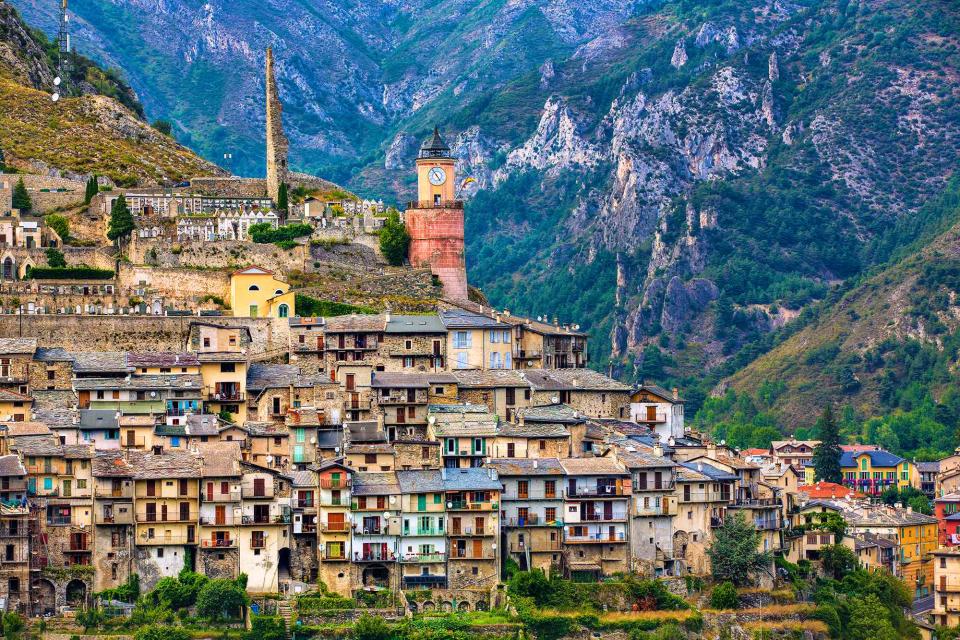
RolfSt/Getty Images
As someone who has been visiting the Cote d’Azur for the last 20 summers (and as a redhead who can’t handle the sun for more than an hour), I’ve become adept at getting “off beach.” I’ve strolled many a shady hilltop village and manicured garden and have spent countless hours in the region’s world-class museums and hotel spas. But my favorite beat-the-heat escape on the French Riviera is to jump aboard the Train des Merveilles, a scheduled rail route between Nice and Tende, a medieval village 2,600 feet above sea level in the Mercantour National Park.
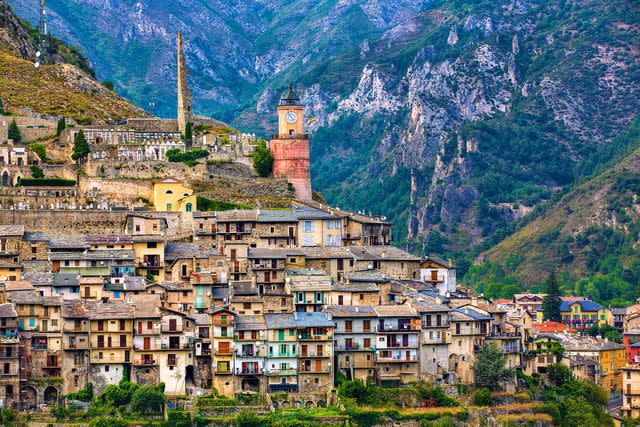
RolfSt/Getty Images
In between is a string of mountain villages hemmed in by the elbow turns along roiling rivers, where outdoor adventure, fresco-filled churches, history museums, a national park, and even a breed of resident sheep — all less than 50 miles from the Baies des Anges beach clubs — invite visitors to experience a different facet of this fabled stretch of French Mediterranean coastline.
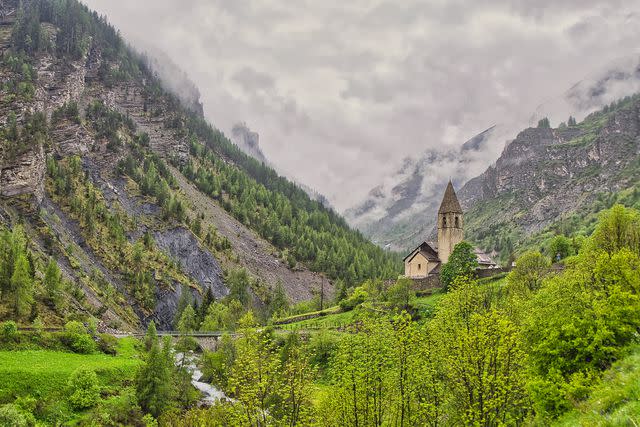
Dufrenoy/Getty Images
Riding the Train of Wonders
The name says it all: the Train des Merveilles, or "train of wonders," is exactly that. Though it takes its name from the sacred Vallée des Merveilles (The Valley of Wonders), a lake-filled wilderness area inside Mercantour National Park, the route indeed unveils its marvels at each mile. As the air-conditioned carriages pull away from Nice-Ville station, the tracks follow the Roya and Bévéra valleys toward the Italian border. Depending on how much time you have and your fitness level, a trip on the Train des Merveilles offers easy day trips from Nice or weeklong outdoor exploits into one of the French Riviera’s most beautiful natural settings.
For visitors who want a little more at no extra cost, the 9:08 a.m. train offers a French-English speaking guide between June and September, who points out gravity-defying structures and regales travelers with facts about the construction feats that made this route an engineering wonder of its time. Work on the tracks began in 1883, and the first train opened to passengers in 1928. The train steams and chugs across hundreds of bridges, viaducts, and retaining walls, and punches through dozens of tunnels carved out of rugged rock walls.
I slid into a seat across the aisle from a couple who had a map spread out on the table between them and hiking poles dangling from their backpacks. Within 30 minutes of departing the station, we began to point and snap photos.
“I don’t know where to look,” the woman said, pressing her nose against the glass.
“Everywhere!” I told her.
It was virtually impossible to see everything in one direction, from just one side of the train, so for the next two hours, we jumped left and right, our heads swiveling and necks craning at the windows as we scoured rocky peaks and river valleys, like train-riding bobble head dolls.
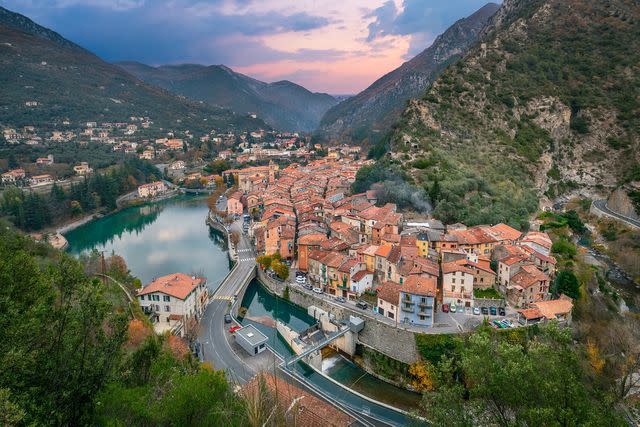
bbsferrari/Getty Images
Honeycomb gold villages and church steeples rolled out beneath deep ravines that looked impossible to reach by car. Other stone houses were so close to the tracks I could make out the flower print of a dress dangling on the laundry line and the lace detail on a curtain. Yards strewn with buckets and abandoned toys, and shaggy gardens ablaze in spring flowers whizzed by in a technicolor blur. At one stop, schoolchildren in matching neon vests marched single file along the tracks. They waved in at us and we furiously reciprocated with animated smiles and giant swings of our arms. Each time the train's doors thwacked open and shut, the air felt cooler and was less salty than it had been at the edge of the Mediterranean Sea.
My carriage companions, hiking poles extended and shoes laced tight, bid me adieu at Breil-sur-Roya. It felt like enough of a privilege just to sit and stare at the passing scenery, but I understood the desire to get out into it.
Where to Stop Along the Way
There are six villages on the Nice-Tende line, some closer to the stations than others, and it would be hard to visit them all in one day. Riders are free to disembark at any of the stops along the way but should always consult schedules carefully as there can be a couple of hours between trains.
For this trip, I opted to travel to Tende in one journey, then inch my way back to Nice, with an overnight in La Brigue. My train car was nowhere near full — just me, the hiking couple, and a few cyclists. However, during peak summer travel months and holiday weekends, this will not be the case.
Tende might be the end of the line for the Train des Merveilles but it’s just the beginning for hardcore hikers and cyclists and prehistory buffs who want to go deeper into the magnificent Mercantour National Park, one of France’s 10. The park is full of rare flora and fauna, and landscapes replete with alpine lakes, wildflower-filled meadows, and hundreds of miles of trails that wind beneath 9,800-foot mountain peaks and craggy gorges. The Vallée des Merveilles (Valley of Wonders), is a frequented destination in the park for its estimated 40,000 ancient rock carvings and paintings. Guides and jeep tours are possible and even required in certain areas.
I opted for a glimpse into the valley’s prehistoric treasure chest without the blisters by making the five-minute walk from the station to the Musée des Merveilles, where exhibits and photos detail the rock paintings and carvings, and other Stone Age artifacts discovered in Mercantour National Park. Down the road is a sweet boutique of Emilie Olivier, who makes colorful felt hats from the wool of Brigasque sheep, a breed raised in nearby La Brigue.
It's a flat half-mile walk into La Brigue from the station to the cobblestone-street center, a launch pad for intermediate and expert hikers who trudge up steep trails to nearby villages and into Italy. For me, the five-mile (roundtrip) path through the woods to see the 15th-century frescoes inside Notre Dame des Fontaines was just fine (check with the tourist office about opening the church). As La Brigue was only ceded from Italy to France in 1947, Italian is common around town, including at l’Auberge Saint Martin, a simple inn and gathering spot where I spent the night.
The restaurant specializes in “cucina bianca,” a style of cooking based on locally grown produce and dairy from the Brigasque sheep bred in the area, which transformed deliciously into the flaky potato and leek Torta Brigasque and sweet ricotta cheese panna cotta served as part of my half-board lodging. On an early morning walk, the sound of hollow bells guided my eyes to a shepherd and two dogs, prodding a herd of Brigasque sheep straight up the hillside.
Whitewater thrill seekers can easily hop off in Breil-sur-Roya, about an hour from Nice, where beginner canoe and kayak excursions or more advanced canyoning jaunts in the Roya River valley take off. The Mat & Eau shop, just a half-mile walk from the station, organizes them all. If you prefer to stay dry, peruse the Tuesday morning farmers market and shop for specialties like olive oil and tapenade, or take a walk to the top of Cruella Tower, the remains of a Middle Ages wall that once encircled the village and was named for a type of hawk, not the Disney character.
Once a staging spot along the old Salt Road of the Maritime Alps, Sospel, also about an hour from Nice, is an easy walk from the station. A fortified stone bridge across the Bévéra River joins the town’s two halves, and a big draw here is the Baroque Saint-Michel cathedral, housing art from the 15th to 17th centuries and an organ dating to 1843. I made a brief coffee stop on the square at the casual La Vie Est Belle snack shop, whose outdoor tables are about as close to the cathedral doors as you’ll get. The village hosts an enchanting Baroque music festival each summer, which unfurls in various venues and squares, including the cathedral.
Travel and Ticket Tips
The Train des Merveilles is a regular route between Nice and Tende, departing five times per day and operated by SNCF, France’s national railway company. It’s OK to hop on and off, but tickets are good for one date and one direction. For early birds, or to get ahead of summer crowds, there is a 5:45 a.m. departure from Nice-Ville that arrives in Tende at 8:26 a.m.
Tickets cost a little less than €15 each way. However, a better deal is the Pass Touristique, offered between May 26 and Sept. 30, 2023. It allows all-day travel within the department for just €16 for the first traveler, and €10 for up to eight subsequent travelers.
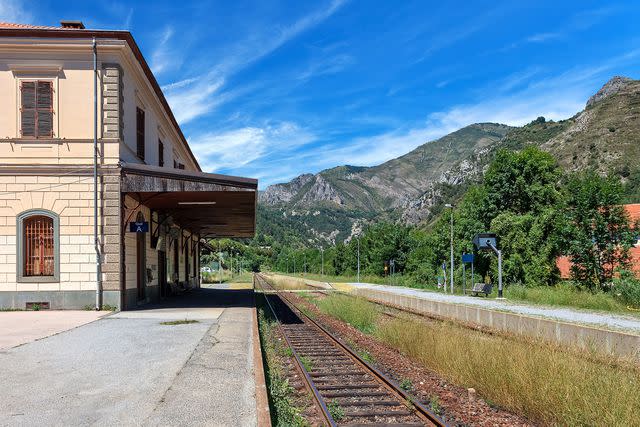
rglinsky/Getty Images
There are no assigned seats onboard the Train des Merveilles, but for obvious reasons, window seats are the best.
You also won’t find a bar/snack car. However, it’s OK to bring your own aboard. I stopped at Paul, a bakery just outside Nice-Ville station that opens at 5:30 a.m. and has fresh croissants and coffee, sandwiches, cheesy baked goods, and sweets to fuel your adventure.
Trains are usually very punctual, but always check schedules in advance as they can change by the minute.
Kimberley Lovato is a traveler and Francophile who writes from her desks in California and France.
For more Travel & Leisure news, make sure to sign up for our newsletter!
Read the original article on Travel & Leisure.

